How to Record Conversations on iPhone 11 Easily
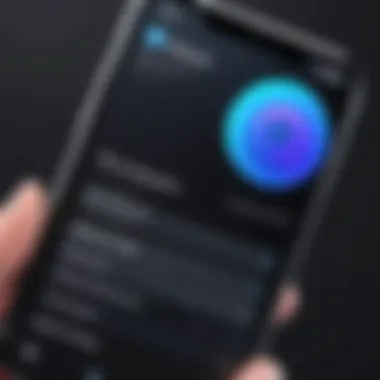
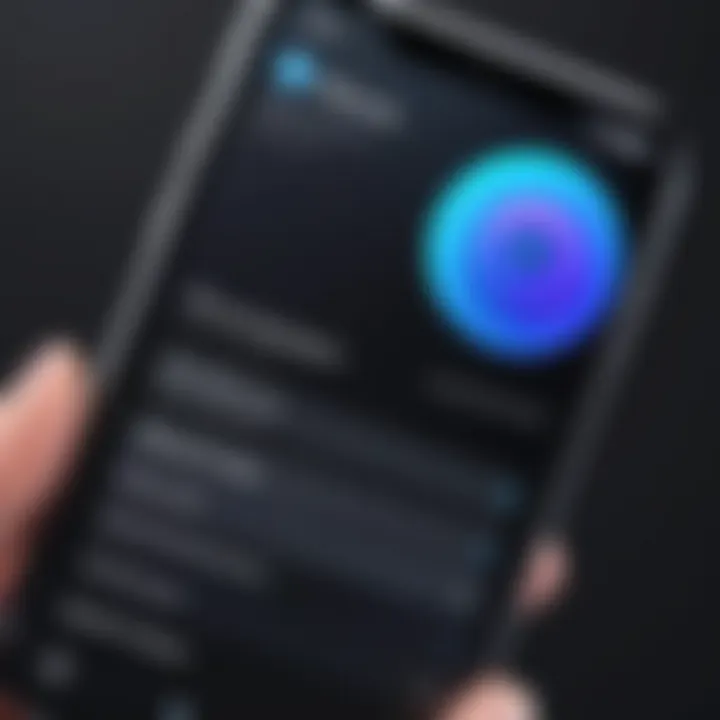
Intro
In an era marked by rapid technological advancements, recording conversations has become a pertinent feature for many smartphone users. The iPhone 11, with its robust capabilities, offers several methods to capture audio exchanges seamlessly. Understanding how to utilize these methods effectively enhances its utility for both personal and professional interactions.
Overview of the Technology
Apple’s iPhone 11 boasts impressive recording capabilities integrated into the device and through various applications. With a powerful A13 Bionic chip, users benefit from efficient performance while recording audio. The device supports high-quality audio output, providing clear and crisp sound recordings for various applications.
Key Specifications
- Microphone Quality: The iPhone 11 comes equipped with high-fidelity microphones that capture sound across multiple ranges. This ensures that conversations are recorded precisely, enabling clear playback.
- Storage Options: Depending on the model selected, storage capacities range from 64GB to 256GB, providing ample space for numerous recordings without compromising overall device performance.
Unique Selling Points
The iPhone 11 provides a unique combination of user-friendly features and advanced technology. Its native applications like Voice Memos allow instant recording without the need for third-party software. Furthermore, features such as background audio recording and noise cancellation boost the overall recording quality, giving users flexibility in various environments.
Design and Build Quality
Apple is known for its premium build, and the iPhone 11 is no exception. The materials used contribute significantly to its performance and durability.
Material Used
- Glass and Aluminum: The iPhone 11 features a textured glass back and durable aluminum frame. This design not only enhances aesthetic appeal but also aids in sound quality during recordings.
- Water and Dust Resistance: Rated IP68, the device can withstand exposure to dust and water, making it a reliable option for on-the-go recordings in diverse conditions.
Ergonomics and Usability
The ergonomic design of the iPhone 11 allows comfortable handling during extended recording sessions. The placement of buttons ensures that users can start and stop recordings quickly, allowing for spontaneous audio captures without hassle.
By understanding the iPhone 11's capabilities and design, users can effectively navigate the process of recording conversations, ensuring high-quality audio that meets their needs.
Intro to Conversation Recording
Recording conversations can serve various important purposes in today’s fast-paced world. As communication becomes more essential, ensuring that every detail is captured accurately is vital for many. This activity can benefit individuals in various scenarios, like interviews, business meetings, and personal discussions. By accurately recording these interactions, users can preserve valuable information for future reference or clarify uncertainties about what was discussed. Understanding how to do so efficiently can have a direct impact on productivity and accuracy in communications.
Moreover, with the advancement of technology, recording conversations has become more accessible and user-friendly. Various tools are now at the fingertips of users, especially those using devices like the iPhone 11, which comes equipped with multiple features that facilitate this process. Knowing how to leverage these technical capabilities allows users to choose suitable methods that suit their needs. Especially for professionals who rely on documentation, recording conversations becomes not just a convenience but a necessity.
In this article, we will cover both the built-in capabilities of the iPhone 11 as well as several third-party applications tailored to enhance the recording experience. Each section will explore essential aspects, from legal considerations to improving audio quality, providing a comprehensive understanding of the recording process.
Understanding these factors not only broadens tech-savvy users' knowledge but also empowers them to utilize their devices fully. Thus, becoming more proficient in conversation recording is essential for anyone keen on improving their communication strategies.
Built-in Voice Memos App
The Voice Memos app serves as a fundamental tool for users seeking straightforward solutions for recording conversations on their iPhone 11. This built-in application enables easy access and functionality. It offers flexibility in various situations, from capturing important business discussions to recording personal notes. The integration of this app with the iPhone's operating system makes it convenient without the need for additional downloads. This section will address how to navigate the app, record conversations effectively, and manage your saved audio files.
Accessing the Voice Memos App
Finding the Voice Memos app is simple. Open your iPhone and swipe down on the screen to access the search feature. Type "Voice Memos" into the search bar. Alternatively, locate it in your applications folder. The app icon resembles an audio waveform, which represents its purpose succinctly. Once you open the app, you will see a straightforward interface with record, pause, and stop buttons prominently displayed. This simplicity makes it easy for any user to operate without prior experience.
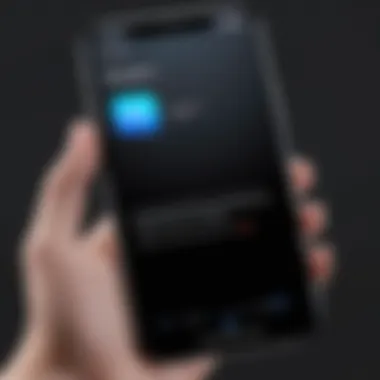
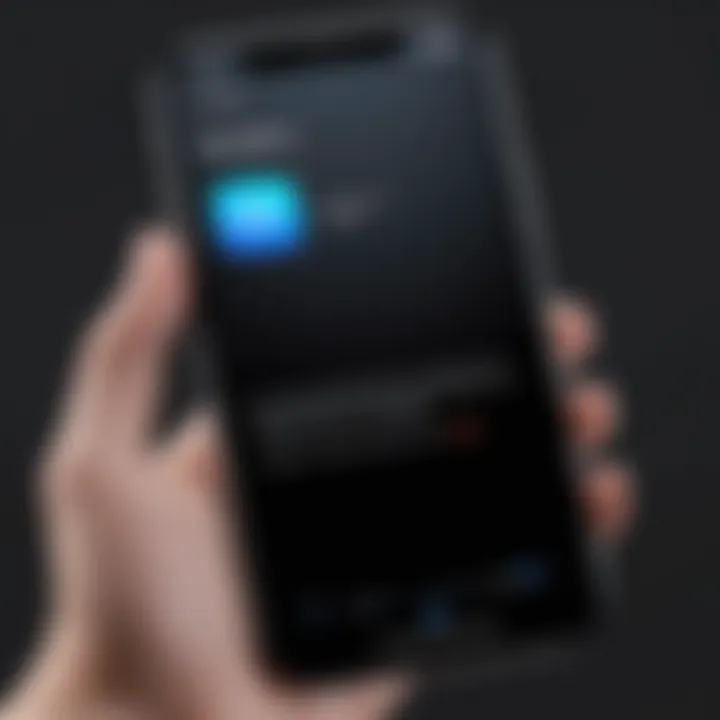
Steps to Record a Conversation
Recording a conversation using the Voice Memos app is a straightforward process. After opening the app, follow these steps:
- Prepare the Device: Ensure your iPhone is charged and has enough storage space to accommodate the recording.
- Start Recording: Tap on the red circular record button at the bottom of the screen. You will see the recording timer indicating that the app is capturing audio.
- Engage in Conversation: Speak clearly and ensure that the microphone is positioned optimally to hear all parties involved. It is recommended to keep the iPhone close enough to capture sound without distortion.
- Stop Recording: When the conversation has concluded, tap the red stop button. Your audio file is now saved and ready for playback.
Saving and Naming Your Recording
Once your recording is complete, it is essential to manage it efficiently for easy access later. By default, the Voice Memos app assigns a generic title based on the date and time. To rename it, follow these steps:
- Select Recording: Tap on the recording you want to rename.
- Edit Name: Tap on the title area and enter your desired name. This could be something descriptive like "Meeting with Client" or "Interview with John."
- Save Changes: Once you finish, simply tap outside the name field to save the new title. This helps in organizing your recordings.
Playback and Sharing Options
After saving your recordings, you might want to listen to them or share them with others. The playback feature is straightforward. Tap on the recording to select it, then press the play button to start listening. You can adjust the volume as needed.
For sharing your recordings, tap on the recording to select it, then look for the share icon, which is typically represented by a box with an arrow. From here, you can choose how you want to share your audio file. You might send it via email, through message apps, or upload it to cloud services for later access. This seamless sharing ability makes the Voice Memos app practical for both professional and personal use.
Remember to consider local laws regarding recording conversations. It's important to obtain consent from participants before recording to respect privacy and legal boundaries.
Limitations of the Voice Memos App
When discussing how to record conversations on an iPhone 11, it is essential to consider the limitations of the built-in Voice Memos app. This app may seem convenient and straightforward to use, but it has some notable drawbacks that can affect its effectiveness in certain scenarios. Understanding these limitations is important for users who want the best recording experience.
Duration of Recordings
The Voice Memos app does not impose a strict time limit on individual recordings, although practical factors may come into play. Extended recordings can consume significant storage space on your device. This can become problematic if storage is limited. Users may find themselves unable to record longer conversations, especially if they have many media files already stored on their iPhone.
Additionally, the app has a default setting that may not alert you when you reach a certain length. You might be surprised to find that the recording unintentionally stopped midway through an important discussion. It is advisable to be conscious about the length of your recordings and check your available storage regularly. Users can consider deleting unnecessary files to free up space before starting a long recording session.
Quality of Audio Recordings
Another limitation of the Voice Memos app is audio quality, which, while generally adequate for personal use, may not meet the standards required for professional contexts. The microphones on iPhone 11 are truly impressive, yet the app’s default settings may not take advantage of the device's full capabilities. Additionally, background noise can intrude on recordings if you are not in a controlled environment, thereby degrading sound clarity.
If the conversation takes place in a noisy locale, like a cafe or a busy street, the Voice Memos app may struggle to capture dialogue clearly. To enhance audio quality, make an effort to record in quieter settings whenever possible. However, those seeking higher fidelity recordings might find separate, specialized recording applications more appropriate for their needs.
"Understanding the limitations of the Voice Memos app is crucial for users in order to optimize their recording experience."
When weighing the pros and cons of this built-in app, users should reflect on their recording needs and environments. Recognizing these limitations allows for better preparation and the consideration of alternative recording methods for more demanding scenarios.
Using Third-Party Applications
Using third-party applications for recording conversations on the iPhone 11 opens up a wide array of functionalities beyond the built-in Voice Memos app. These apps often provide advanced features such as noise cancellation, cloud storage integration, and more flexible sharing options. They cater to specific needs that users may have when recording conversations, making them a significant consideration for anyone looking to improve their recording experience.
There are various applications available in the App Store that offer unique benefits. These might include enhanced audio quality, user-friendly interfaces, and specific settings tailored to either silent environments or noisy backgrounds. Furthermore, many apps allow users to edit recordings directly after capturing them, facilitating a smoother workflow.
While third-party apps add functionality, choosing the wrong one can lead to poor recording quality or limited features. Hence, understanding the ecosystem of available options is important for any user seeking to maximize their recording capabilities.
Step-by-Step Guide to Recording with Third-Party Apps

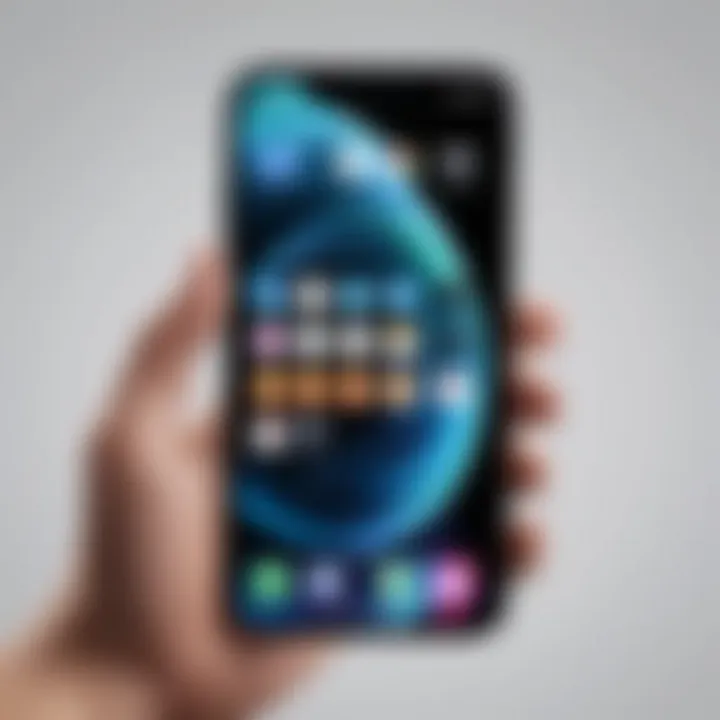
Using third-party apps for recording conversations on the iPhone 11 can offer enhanced capabilities compared to the built-in Voice Memos app. These applications often provide additional features, such as better editing tools, cloud storage options, and sharing capabilities. This guide aims to equip users with the necessary steps to successfully download, install, and utilize these applications effectively.
Downloading and Installing the App
The first step in utilizing a third-party recording app is to select and install it from the App Store. Many users tend to opt for applications like Rev Voice Recorder, Otter.ai, or TapeACall. Each app has unique attributes catering to different recording needs.
- Open the App Store on your iPhone 11.
- Use the search bar to find a specific app by typing in the name, such as "Rev Voice Recorder".
- Once found, tap on the get button to initiate the download. Depending on your settings, you may need to enter your Apple ID password or use Face ID.
- After the app is downloaded, tap Open to begin setting it up.
Setting Up the App for Recording
After installation, it is crucial to set up the app according to your preferences. Here are general steps that most recording applications will require:
- Create an Account: Some applications require users to register for an account to access full features. Fill out the necessary details to create an account.
- Grant Permissions: Allow the app access to your microphone and, if needed, location services. This step is critical as it enables the app to record audio effectively.
- Adjust Settings: Look for settings regarding audio quality, file format (like MP3 or WAV), and automatic backup options. Make sure to select the settings that best fit your recording needs.
Executing a Recording
Now that the app is installed and configured, you're ready to start recording conversations. Follow these basic steps:
- Open the App: Launch the recording app you installed.
- Select Recording Options: You may encounter options like voice, audio, or conference recording modes. Choose the appropriate option based on your needs.
- Press the Record Button: Typically represented by a red circle, tapping this will start the recording.
- Monitor Recording Levels: Keep an eye on audio levels displayed within the app. This can prevent audio distortion and ensure clear recordings.
- Save Your Recording: After the conversation, press the stop button. Most apps prompt you to name or tag your recording for easier location later.
Important Consideration: Always remember to check your app's privacy policy and terms of use to understand how your data will be utilized.
By following these systematic steps, individuals can efficiently leverage third-party apps for recording conversations on their iPhones. This approach not only enhances the recording experience but also aligns with specific user requirements.
Legal Considerations
Recording conversations presents several legal challenges that individuals must navigate. This section discusses the implications of such actions, focusing on consent laws, ethical practices, and the potential ramifications of failing to comply with legal standards. Understanding these considerations is essential to avoid legal repercussions and to maintain respect for privacy in communications.
Understanding Consent Laws
Consent laws vary significantly depending on location. In some jurisdictions, only one party's consent is necessary for recording a conversation. This means if you are partaking in the discussion, you can record without informing the other participant. However, in other places, all parties involved may need to agree to the recording. This dual system of consent can create confusion. Therefore, individuals should always check the specific laws relevant to their area before proceeding with any recording. Ignorance of the law can lead to serious legal issues, including criminal charges.
Here are important points to consider regarding consent laws:
- One-party consent states allow individuals to record conversations they are having as long as one party knows about it.
- Two-party consent states require all parties to be aware of and agree to the recording.
- Breaching these laws can result in hefty fines or legal action from other parties involved in the conversation.
Best Practices for Ethical Recording
Beyond legal requirements, ethical considerations are just as significant when it comes to recording conversations. Maintaining integrity and respect for others enhances communication and trust. Here are a few best practices to consider:
- Inform All Participants: Even if the law does not require it, informing all parties about the recording helps foster transparency.
- Seek Explicit Consent: Whenever possible, ask for permission directly. This practice shows respect and can prevent misunderstandings.
- Limit Usage of Recordings: Use recordings strictly for the intended purpose. Sharing or exploiting recorded conversations without consent can breach trust and potentially lead to legal issues.
"Respect for privacy should guide the decision to record any conversation. Not doing so can have significant consequences."
By adhering to these best practices, individuals can navigate the complexities of recording discussions while upholding both ethical standards and legal requirements.
Enhancing Quality of Recorded Conversations
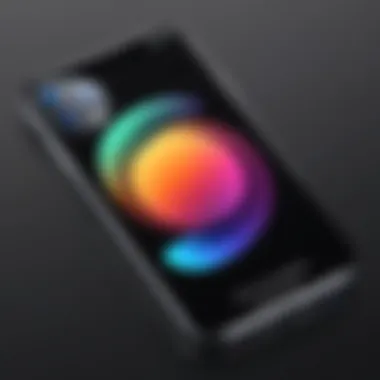
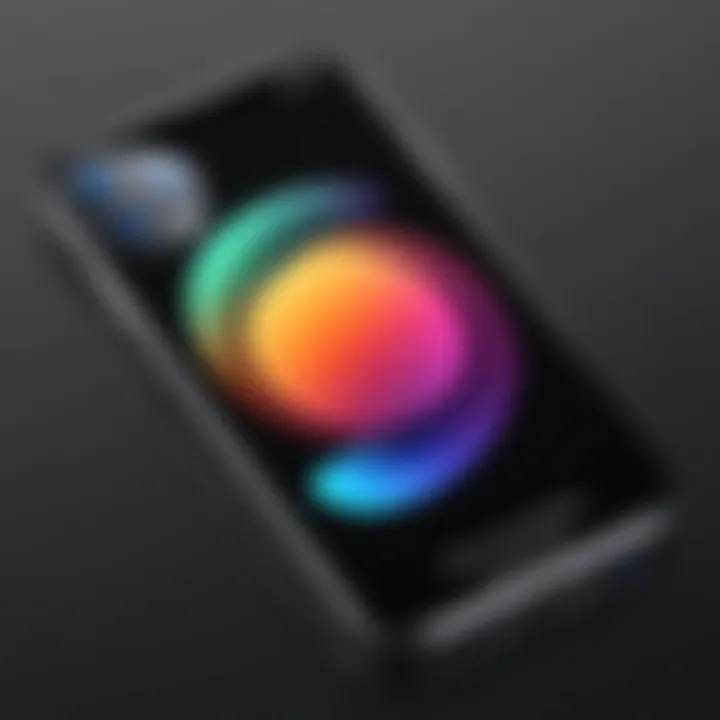
Enhancing the quality of recorded conversations is essential for anyone seeking to capture audio clearly and effectively. High-quality recordings can be invaluable for various purposes, including interviews, meetings, or personal notes. To achieve this, certain elements should be considered carefully. The combination of the right environment and proper device setup can significantly impact the clarity and overall quality of the audio. By paying attention to these factors, you can minimize background noise and ensure that the voices you want to capture are distinct and audible.
Choosing the Right Environment
The environment where a conversation is recorded can greatly influence the audio quality. Ideally, select a location with minimal external distractions and noises. Here are some practical tips for selecting the right place:
- Quiet Rooms: Choose a room that is generally quiet, free from traffic, construction sounds, or public disturbances.
- Soft Furnishings: Areas with carpets, curtains, and upholstered furniture can help absorb sound and reduce echo. This makes the recording sound less harsh.
- Controlled Acoustic: Consider the layout of your recording space. Avoid large, empty rooms that can create a hollow sound.
By taking these factors into account, you create a conducive setting for recording that enhances clarity and reduces background interference.
Microphone and Device Setup
Proper setup of microphones and devices is crucial for capturing high-quality audio. The iPhone 11 has good built-in microphones, but using external microphones can further improve sound quality. Here are several key elements to consider:
- External Microphones: Using a lapel mic or a shotgun mic can provide clearer audio than the built-in microphones alone. These can be connected via the Lightning port or Bluetooth.
- Positioning: Position the microphone close to the speaker. This not only captures their voice clearly but also minimizes ambient sounds.
- Testing Levels: Before the actual recording, make sure to test the audio levels. This ensures that the sound is neither too loud nor too soft.
Experimenting with the microphone and device settings can dramatically elevate the sound quality of your recordings. Ensuring the right setup allows for a more professional and coherent audio output.
Troubleshooting Common Issues
Understanding common issues that may arise while recording conversations on your iPhone 11 is vital for users who seek a smooth experience. When using technology, one can encounter unexpected challenges that can disrupt the recording process. Recognizing these potential issues allows the user to resolve them quickly, ensuring recordings are captured accurately and effectively. This section provides insights into two significant concerns: audio quality problems and app crashes or errors. Addressing these issues can enhance the overall user experience and improve the usability of recorded material.
Audio Quality Problems
Audio quality is a crucial aspect of conversation recording. Low-quality audio can hinder the clarity of speech, making it difficult to understand the conversation later. There are several factors that can negatively impact audio quality. These include background noise, distance from the microphone, and even the recording settings used in the app.
- Background Noise: Recording in a noisy environment can lead to unwanted ambient sounds disrupting the conversation. Try to locate a quieter space for better results.
- Microphone Proximity: The further you are from the device’s microphone, the weaker the audio signal becomes. Keeping the source of the sound closer to the microphone is essential for capturing clear audio.
- Settings and Format: Some apps allow changes in recording format, bit rate, and other technical settings. Familiarizing yourself with these options can lead to improved audio quality.
- Check the app settings before recording.
- Adjust settings according to your needs for clarity.
To test audio quality, consider recording short snippets and playing them back. This gives you a chance to make adjustments before initiating important recordings.
App Crashes and Errors
App crashes and errors can derail the recording process, which can be frustrating, especially during important conversations. Multiple factors can contribute to these issues:
- Device Storage: If your iPhone is low on storage, the recording app may crash during or after a recording. Regularly checking the storage capacity and clearing unnecessary files can prevent this.
- App Updates: Using outdated apps can lead to crashes. Developers frequently release updates to fix bugs or improve performance. Always ensure that you have the latest version of the recording app installed.
- Background Applications: Running too many apps at once can overload the device’s memory. Closing unnecessary applications before starting a recording can help maintain app stability.
If an app does crash, relaunch the application and check if the recording saved correctly. Keeping backups of important recordings is also a wise practice. It can save you from losing vital content due to unexpected app malfunctions.
End
In this article, we have explored the various methods available for recording conversations on an iPhone 11. Understanding how to effectively utilize these features is significant for several reasons. First, recording conversations can be a valuable tool for personal documentation. Whether for interviews, meetings or capturing important discussions, it allows for accurate recall of information.
Many individuals also find comfort in the transparent nature of having a recording during discussions that may include sensitive topics. The Apple iPhone 11, with its technical capabilities, allows for both built-in and third-party applications to cater to different user needs.
The consideration of legal aspects cannot be overlooked. Being aware of the consent laws in your region is crucial for responsible recording. This article highlights those considerations, ensuring you can navigate your rights and responsibilities while recording.
Moreover, we provided a structured approach to enhance the quality of recordings through techniques like choosing ideal environments and optimizing device settings. Trouble areas were also addressed, with practical solutions to common issues one might face when recording.
In summary, the ability to record conversations not only empowers users to manage information better but also assures legal compliance and ethical considerations. This guide serves as an extensive resource for those looking to utilize the recording feature on their devices efficiently.
Summary of Key Points
- Using the Voice Memos app for straightforward recordings.
- Exploring third-party apps for additional features.
- Understanding legal implications of recording conversations.
- Enhancing recording quality by focusing on environment and setup.
- Troubleshooting common issues to improve user experience.







